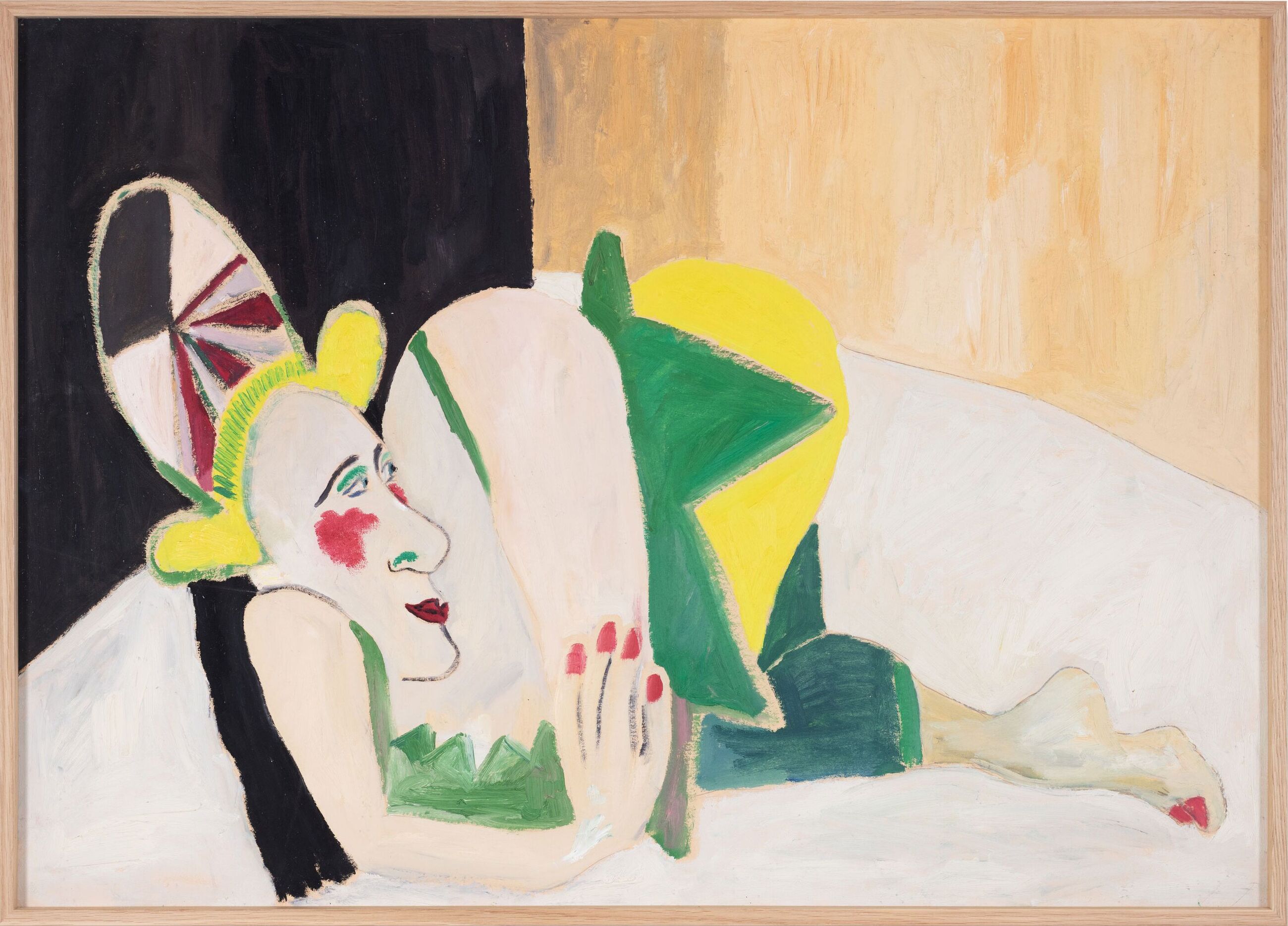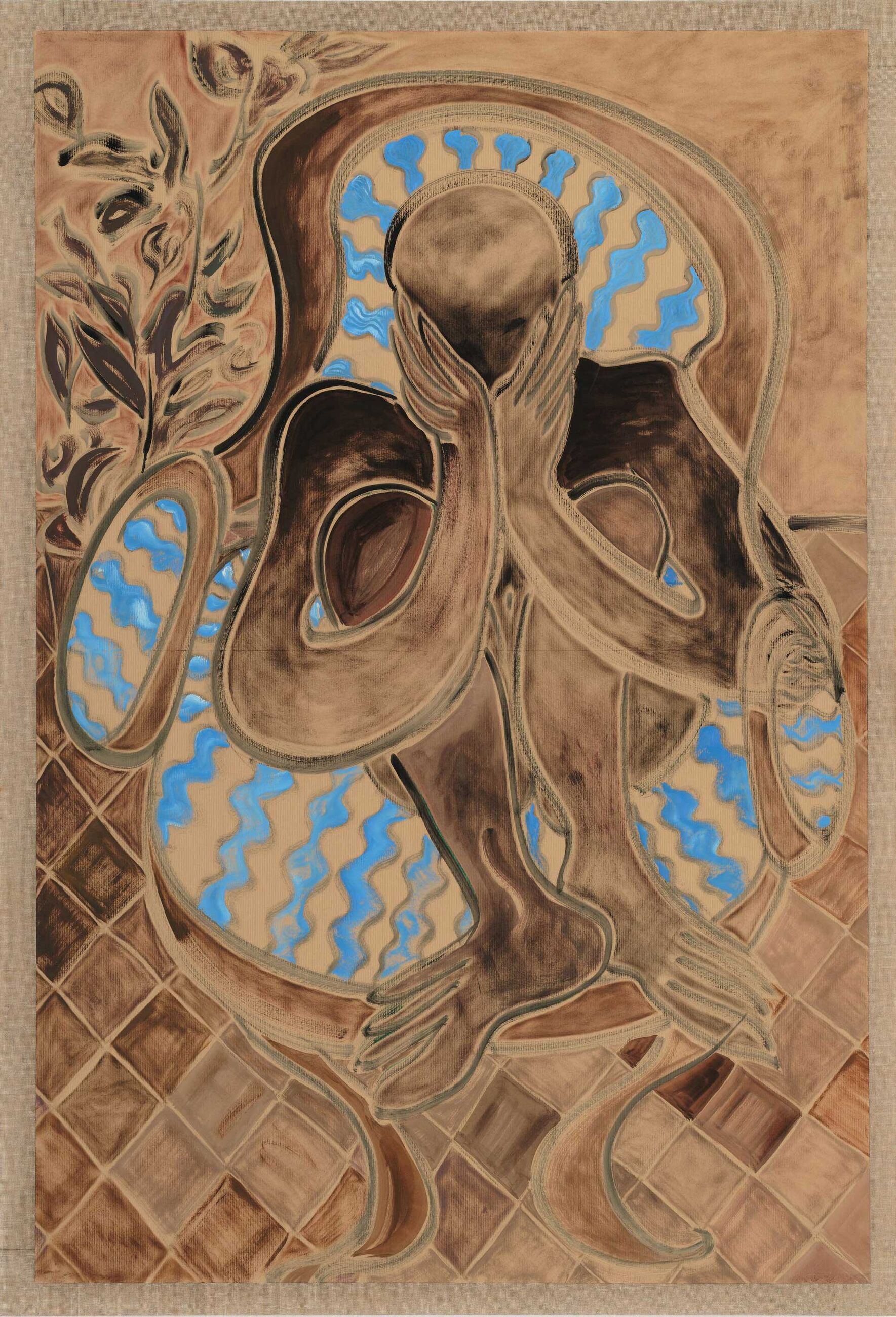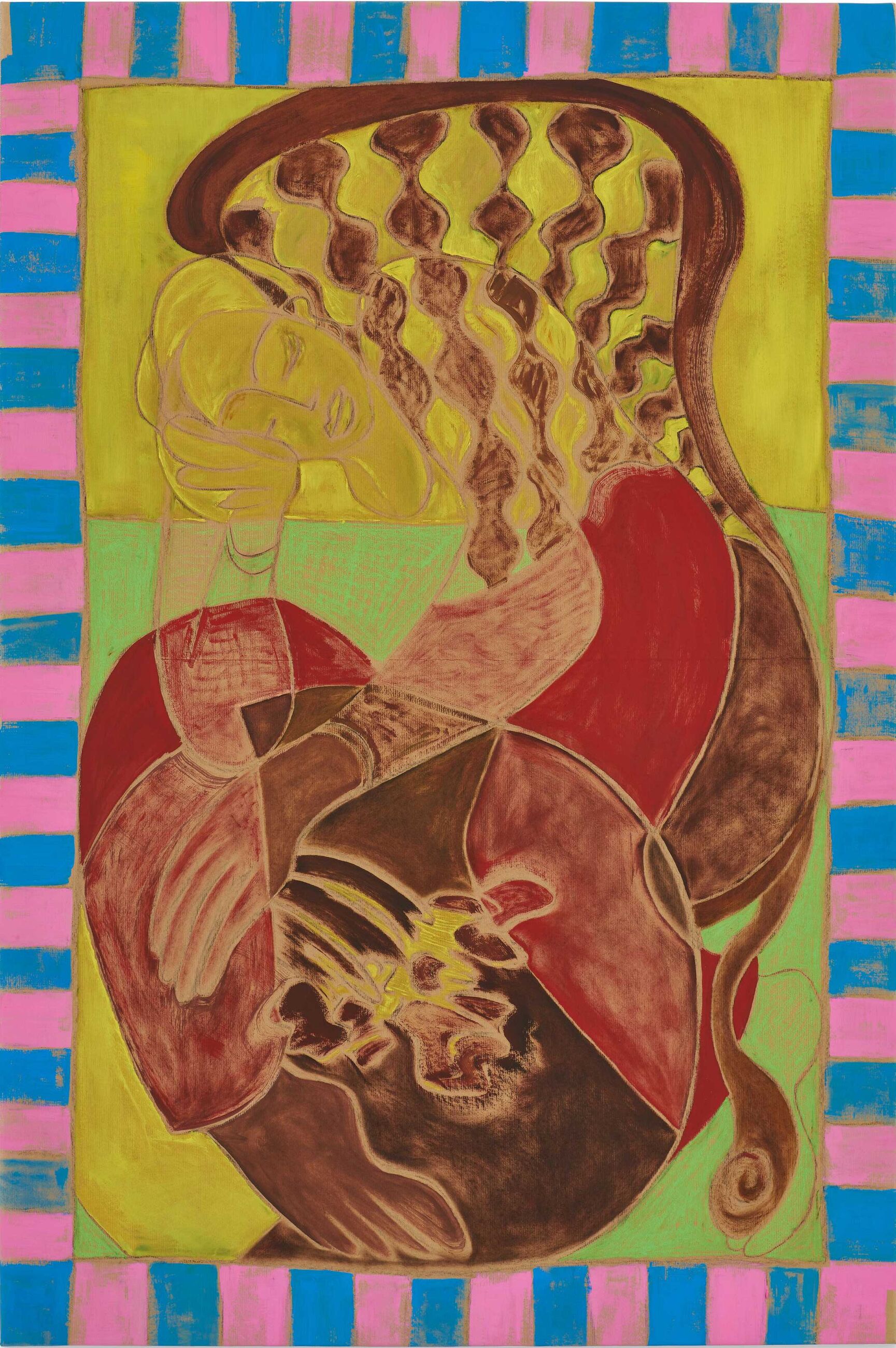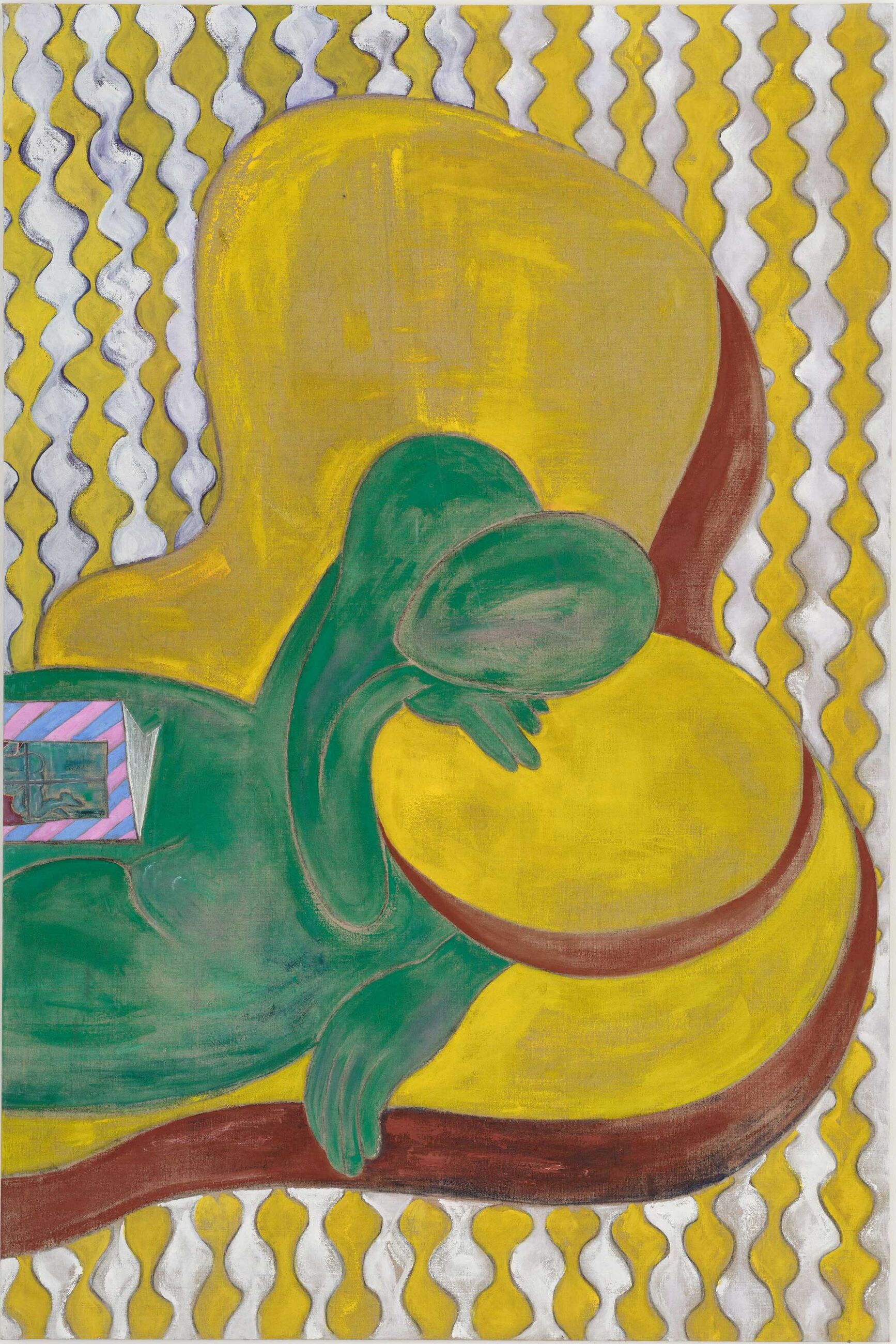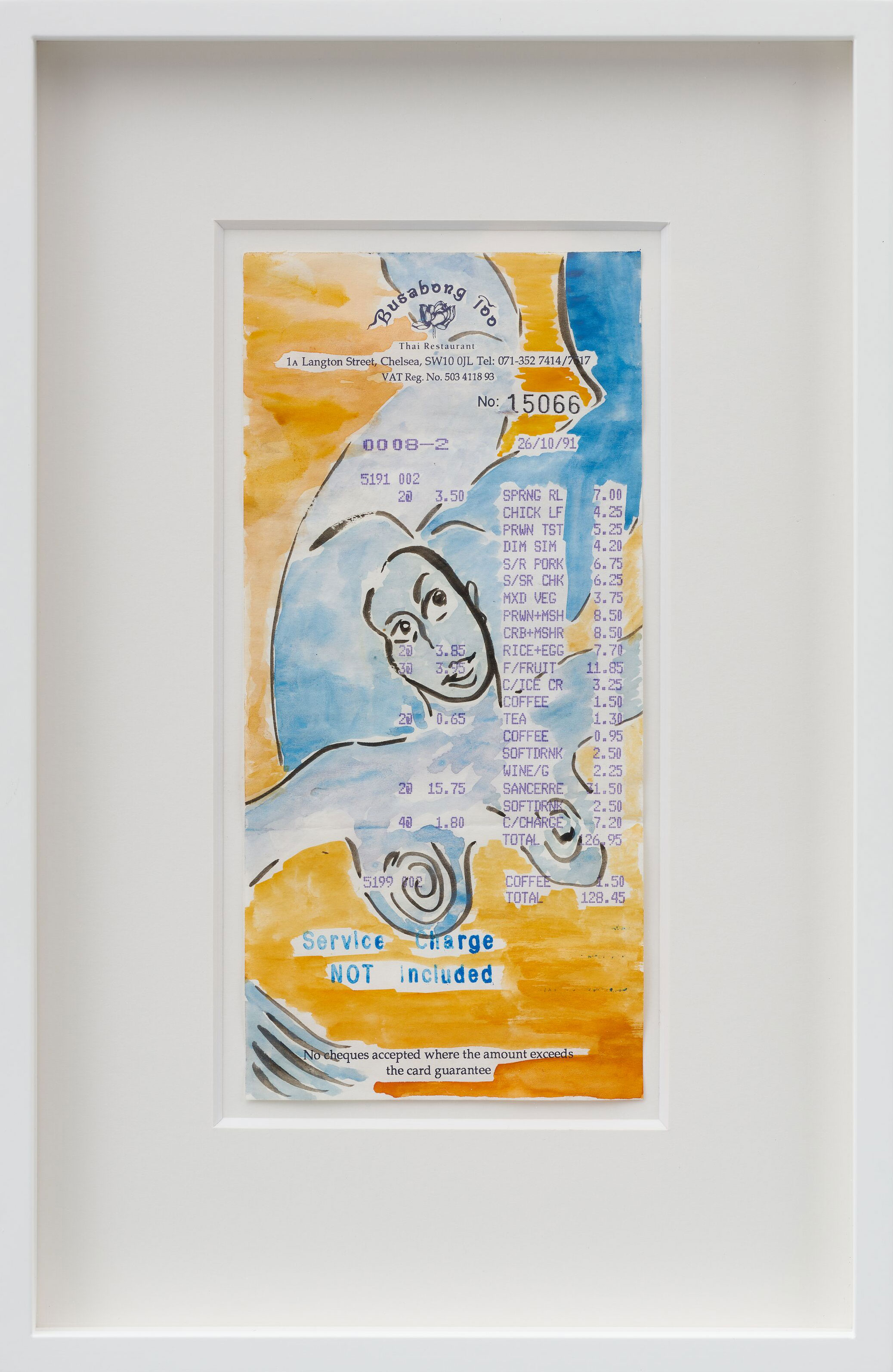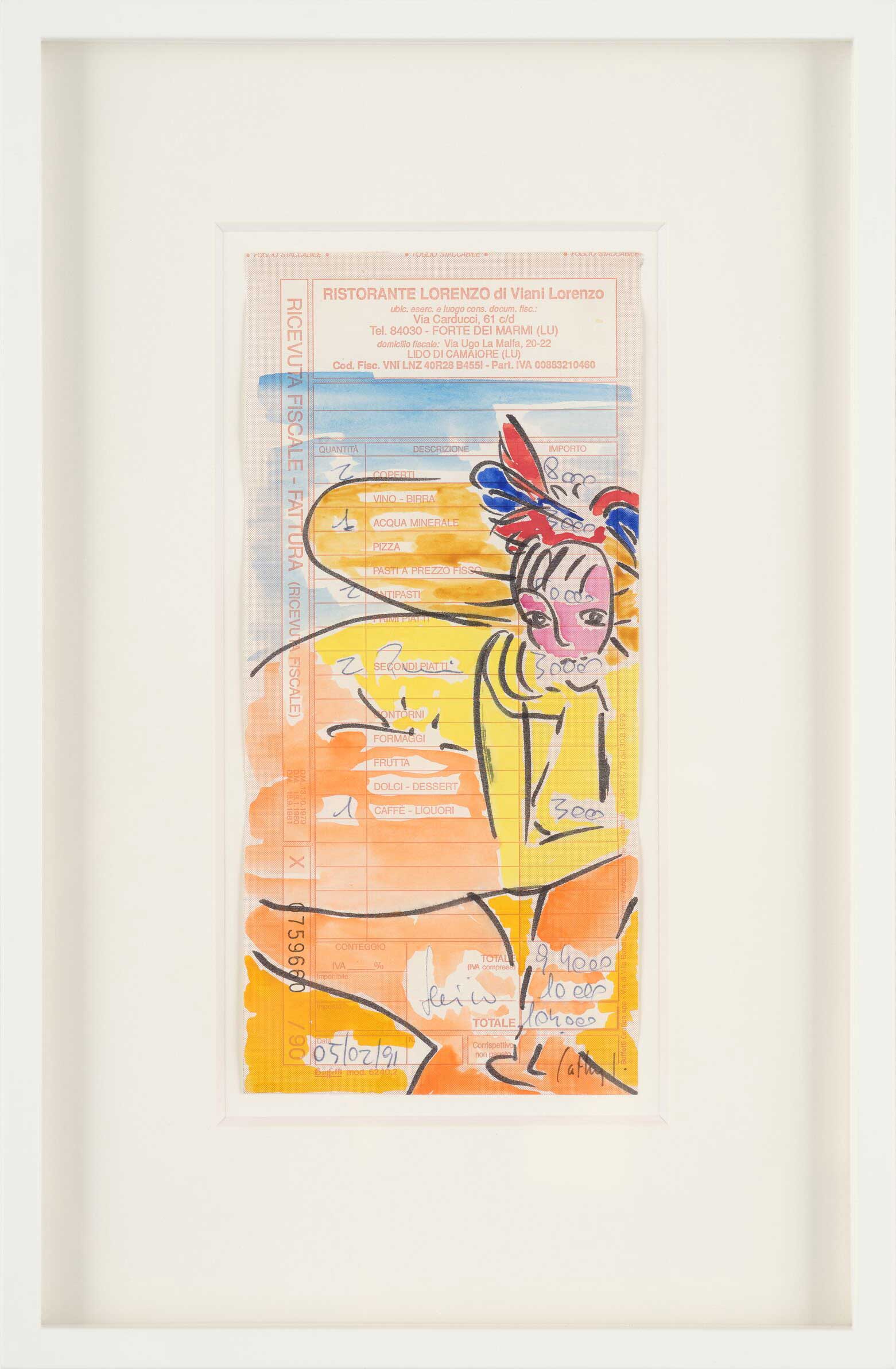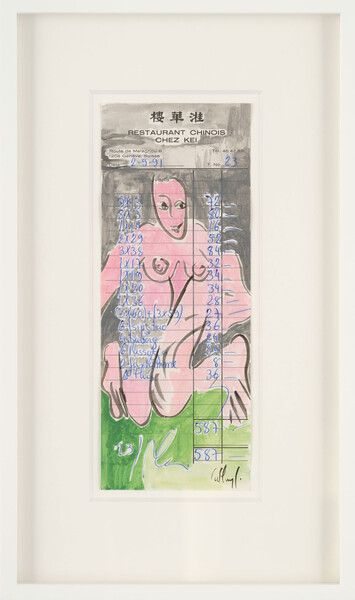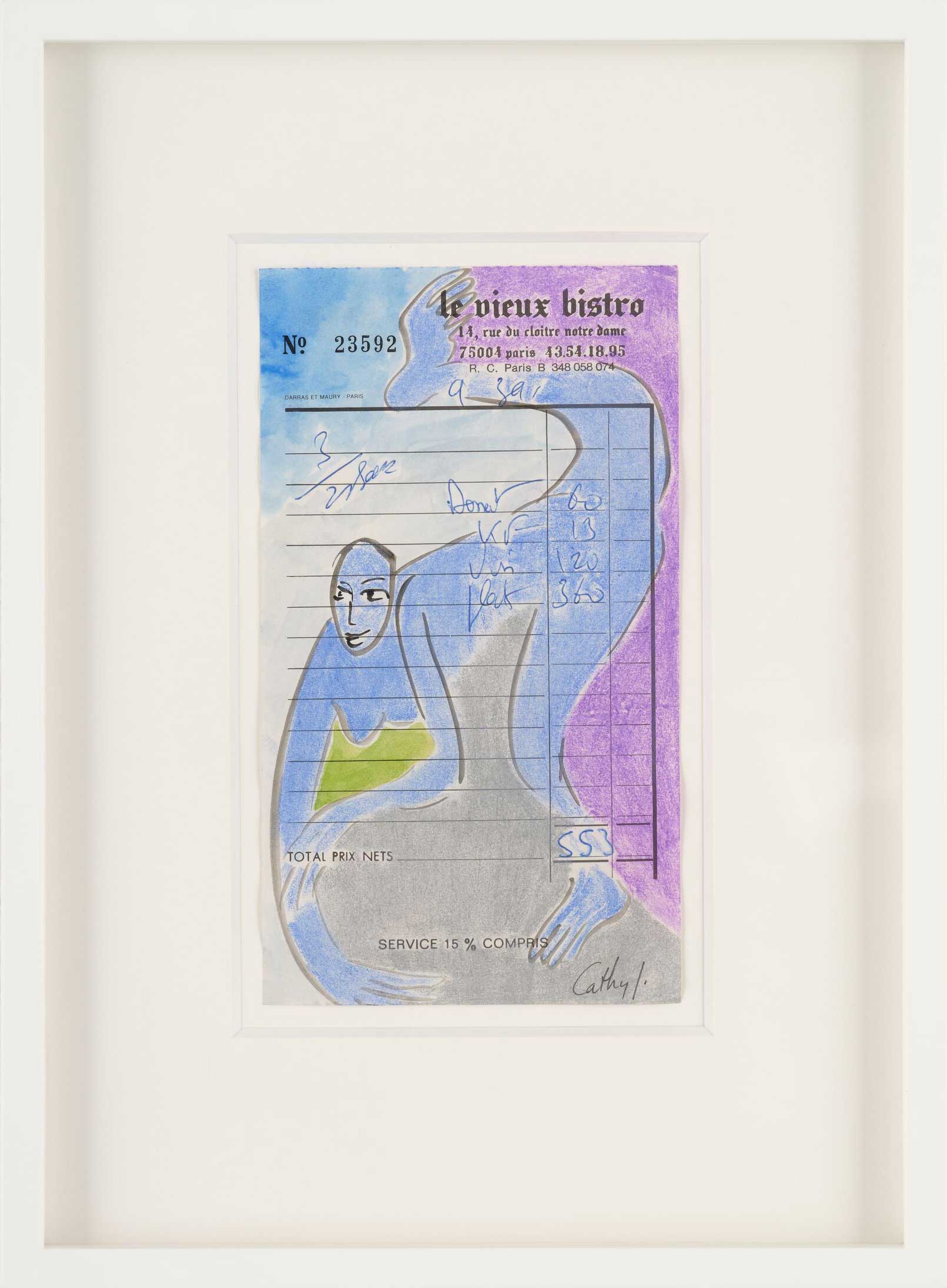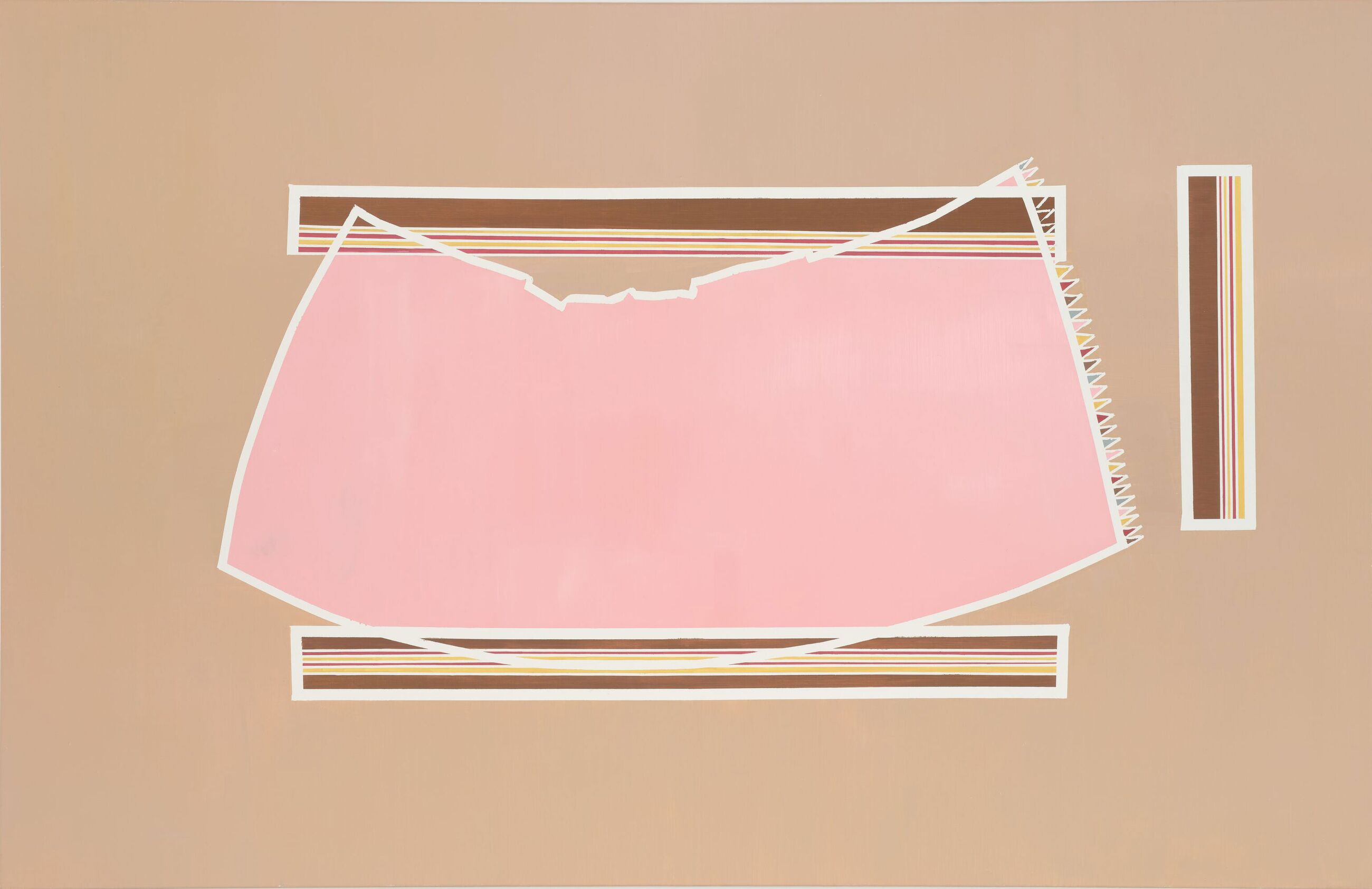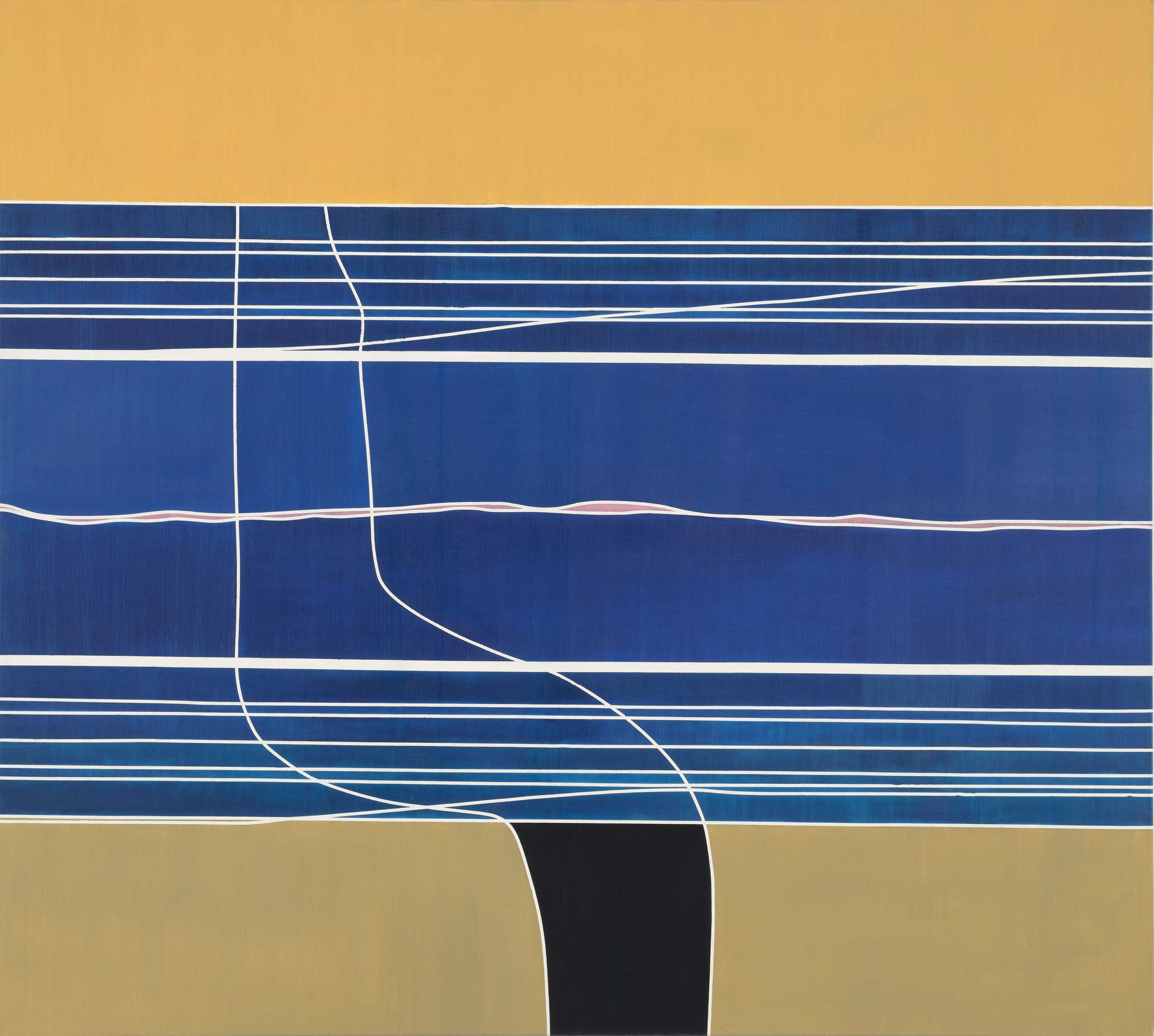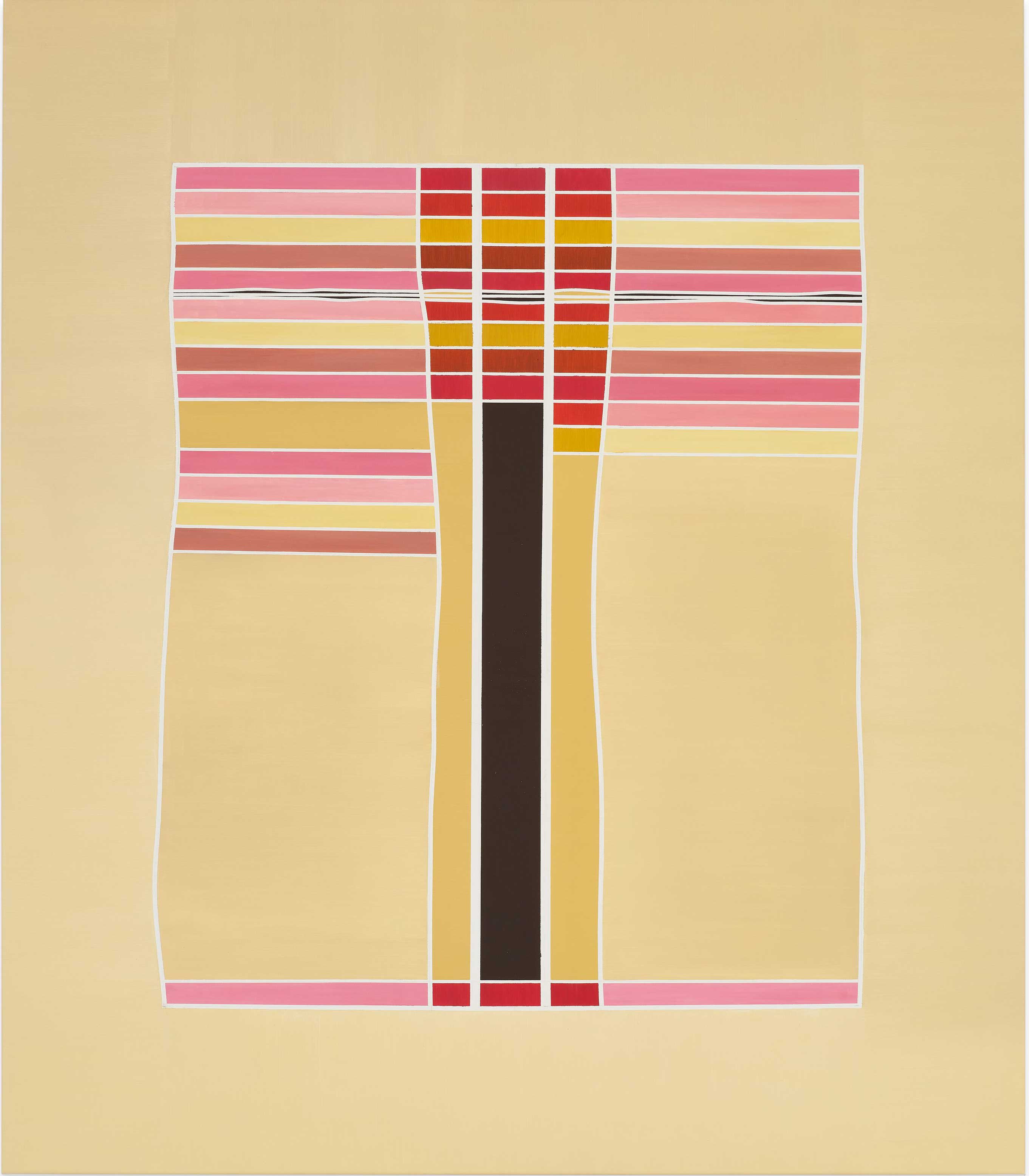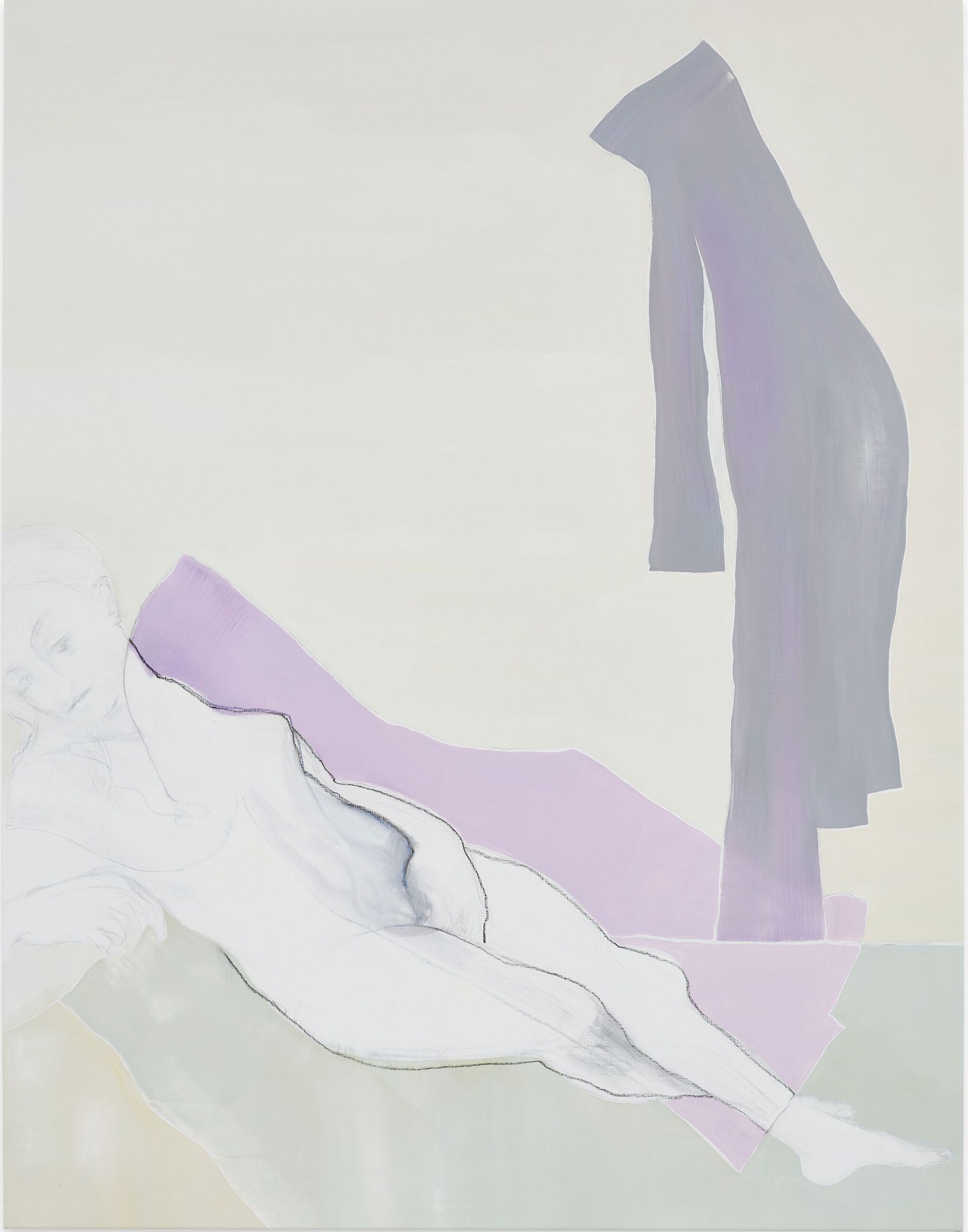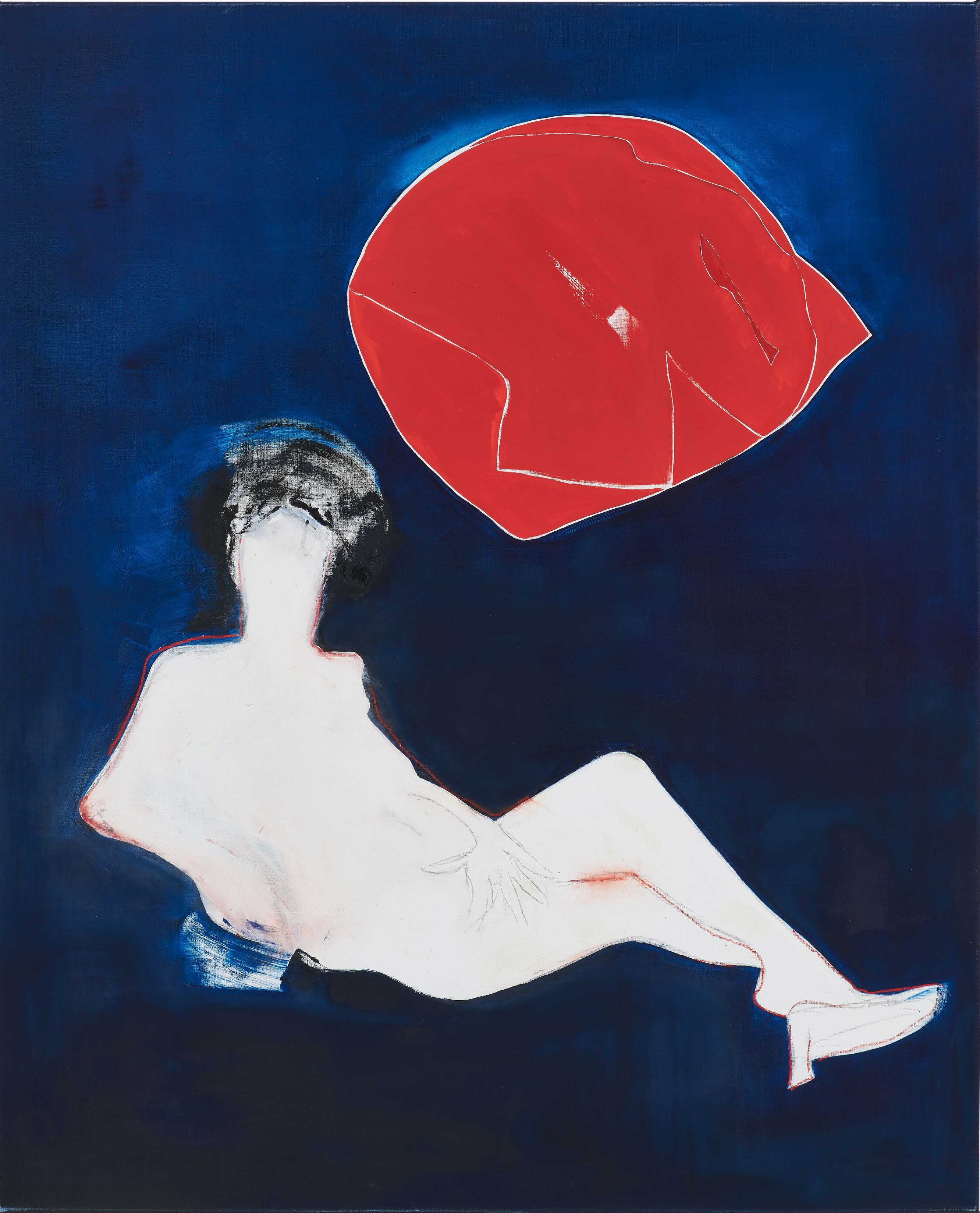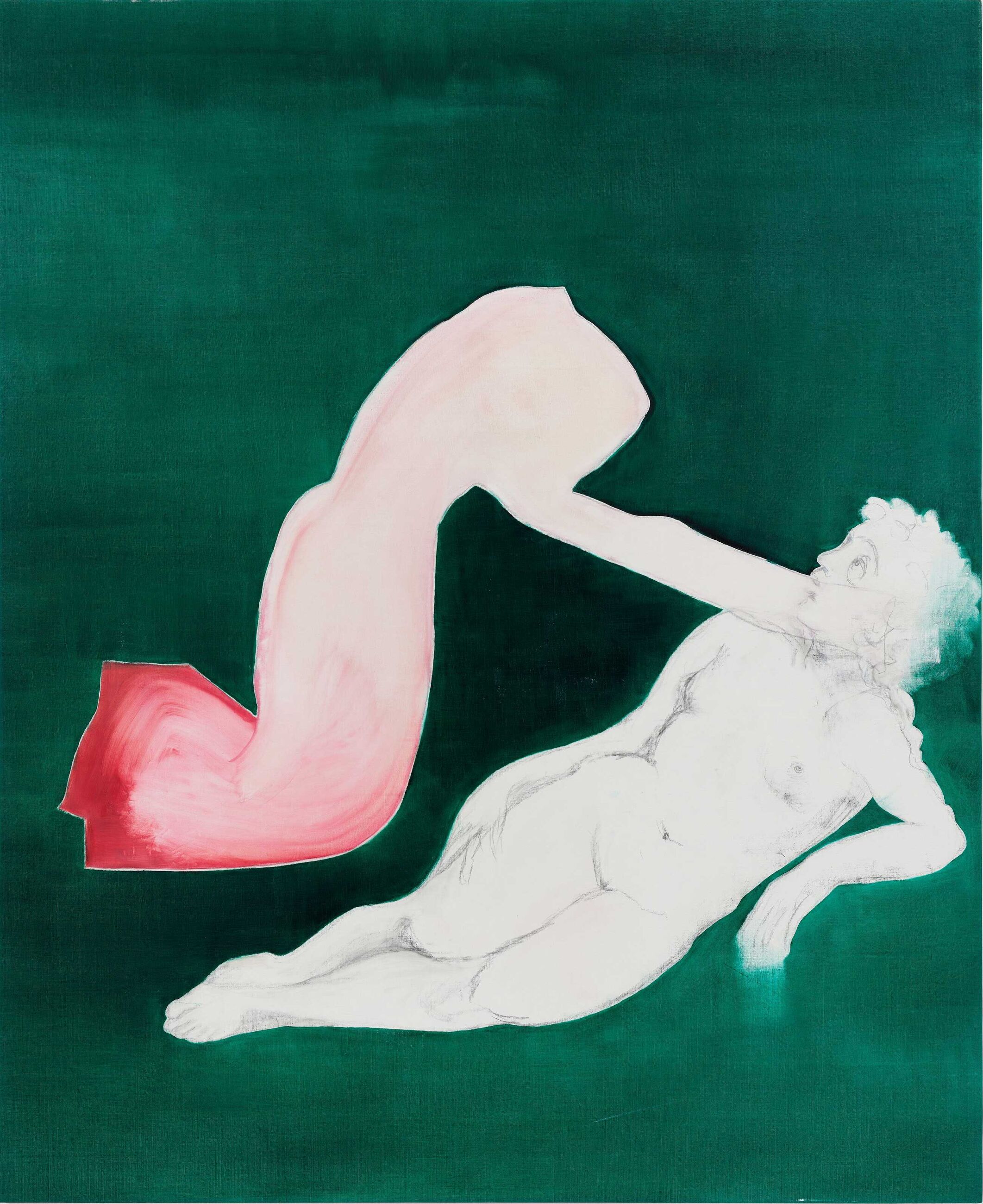Cathy Josefowitz
Release
1 February – 17 May 2024
Zurich, Limmatstrasse
New York-born, Swiss-raised artist Cathy Josefowitz (1956 – 2014) created a wide-ranging oeuvre spanning drawing and painting, performance and dance. The breadth of her creative output is on view in a solo exhibition—Josefowitz’s first in Zurich—focusing on her compelling progression of the figure across four decades, from the 1970s to her later shift towards abstraction, with many works shown for the first time.
Explore the exhibition
The presentation takes its title from Josefowitz’s choreographic piece ‘Release’ (1988), a performance replete with fluid movements that is projected on the wall of the gallery. Drawing on the Anatomical Release technique pioneered by dance teacher and choreographer Mary Fulkerson, Josefowitz falls, twists and rolls in order to let go of tension and cultivate creativity, liberating her body and mind. This feeling of liberation is translated into her later works through the gradual shift from figuration to abstraction. Her relentless and personal quest for expression unites the various works on view in Zurich, with some exhibiting elements of self-portraiture.
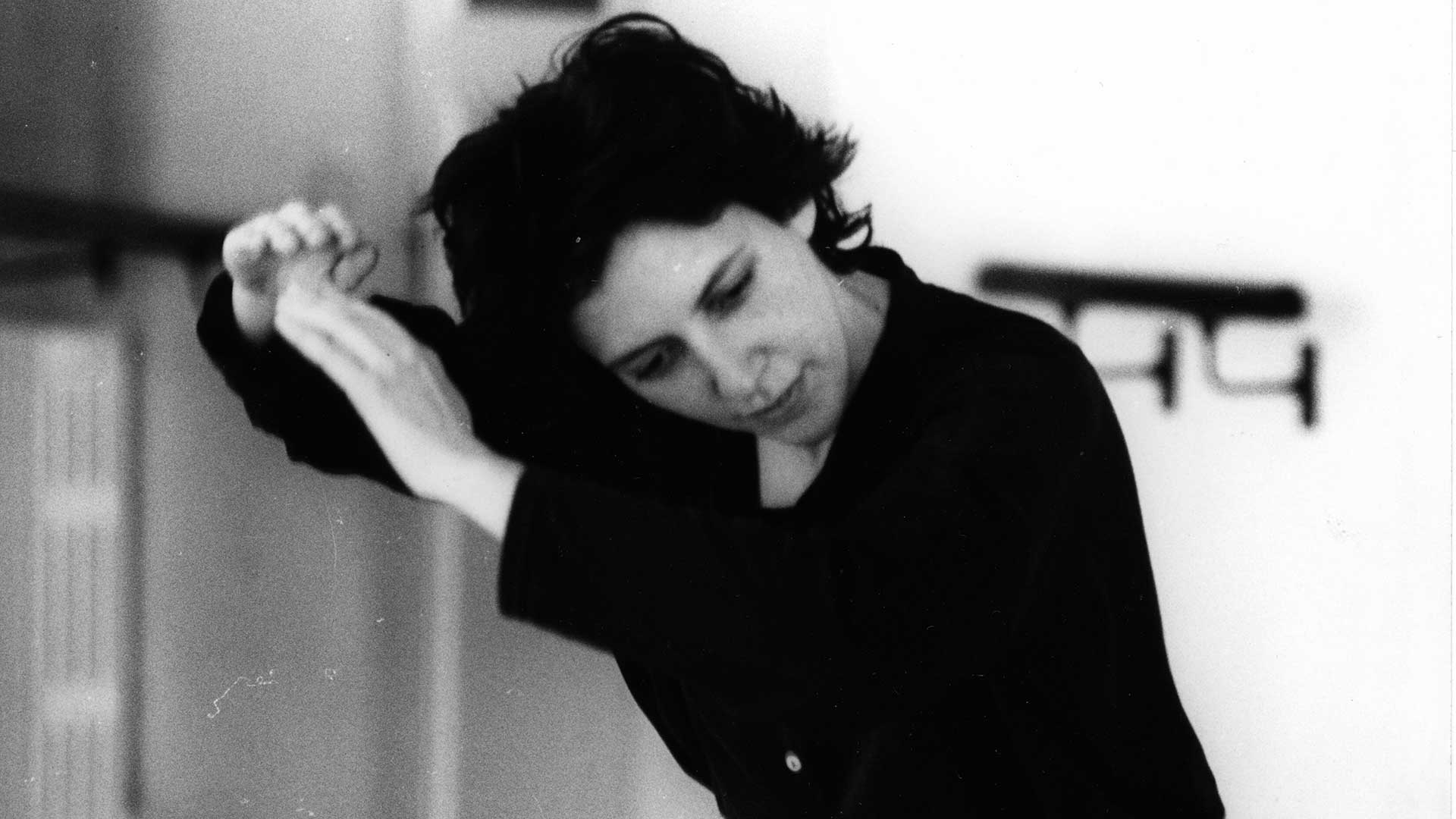
Born in New York in 1956, Cathy Josefowitz spent her childhood and adolescence in Geneva, Switzerland. The artist’s lifelong fascination with the bodily experience was sparked in part by her study of stage design at the Théâtre National de Strasbourg from 1972 – 1973. After attending the École Nationale Supérieure des Beaux-Arts in Paris from 1973 – 1978, Josefowitz studied performing arts and new dance at the renowned Dartington College of Arts in Devon, England from 1979 to 1983 and later choreography at the SNND School for New Dance Development, Amsterdam from 1987 – 1988. During her time in England, Josefowitz became involved in political activism, taking part in demonstrations, marches and conferences supporting both the feminist movement and the gay and lesbian liberation movement. Mirroring the increase in her engagement in political activism and feminism, Josefowitz’s art intensified its representation of female sensation and feeling.

Josefowitz’s exploration of the corporeal manifests in works from the 1970s that are filled with figures, predominately female, reclining or in varying states of repose. Her oils on cardboard, such as ‘Untitled’ (ca. 1974), are characterized by colorful backgrounds portraying domestic interiors, influenced by the artist’s exploration of stage design. The unnaturalistic color and vivid brushstrokes of this period, particularly apparent in Josefowitz’s gouches on paper, recall the work of fauvists Henri Matisse and André Derain, who rejected three-dimensionality in their painting practice.
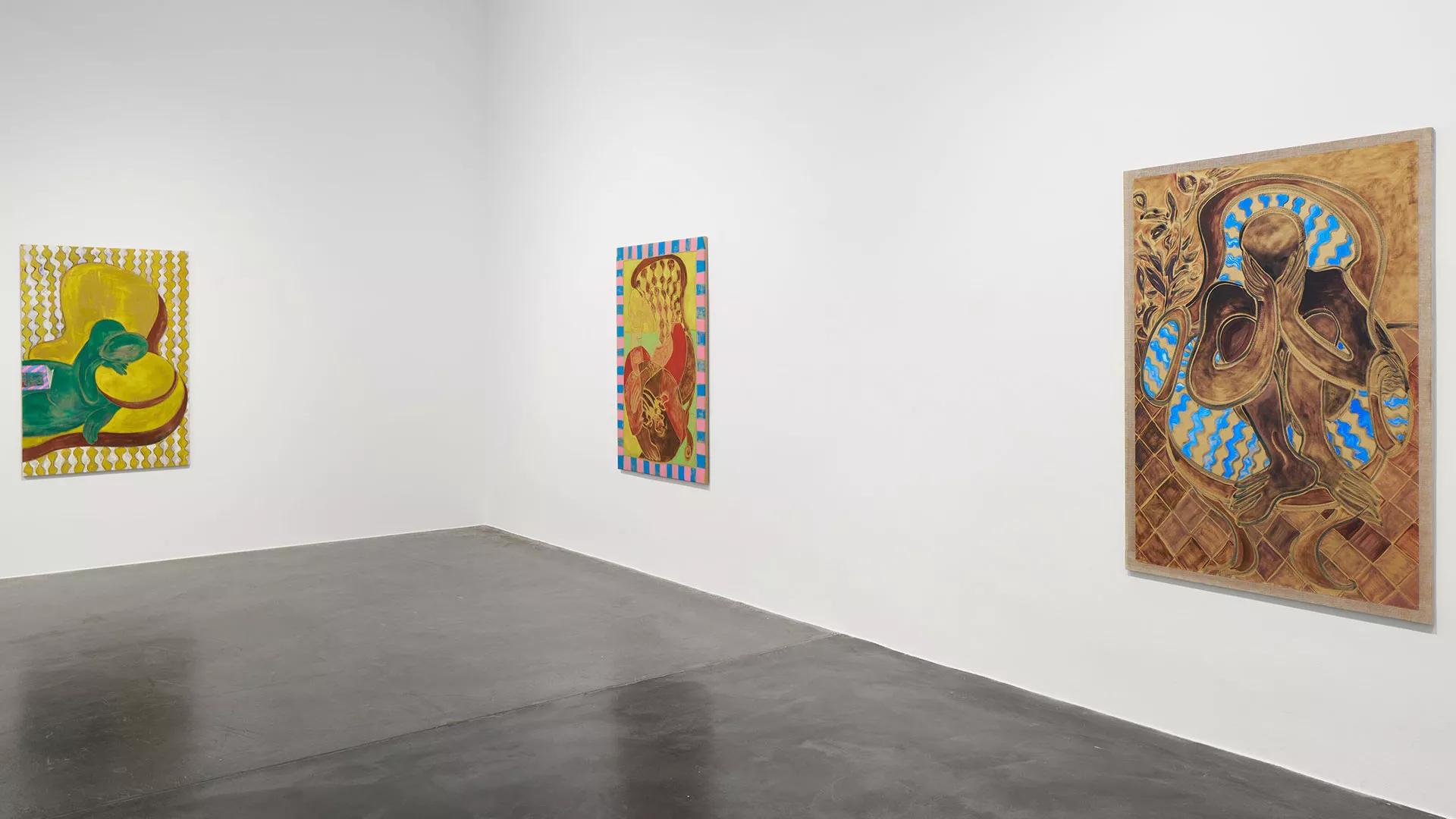
These paintings are complemented by figurative works from the early 1990s in which Josefowitz’s visual language enters a new phase, revealing a different way of working with the body through a shift in pattern, style and form. Using various combinations of oil, gouache, charcoal, pastel or chalk, the artist’s biomorphic subjects reached a new level of simplification, becoming indistinguishable from the chairs on which they rest. ‘Untitled’ (1993) exemplifies this movement towards a more non-representational style, achieved by a focus on shape of the figure and bold planes of color. Releasing her subjects from historic depictions of the female body, Josefowitz reveals a unique awareness of and sensitivity to the physical forms of the self. The backgrounds of the works have also entered a transformation, characterized by geometric patterns and curvilinear forms, resulting in the isolation of the figure in space.
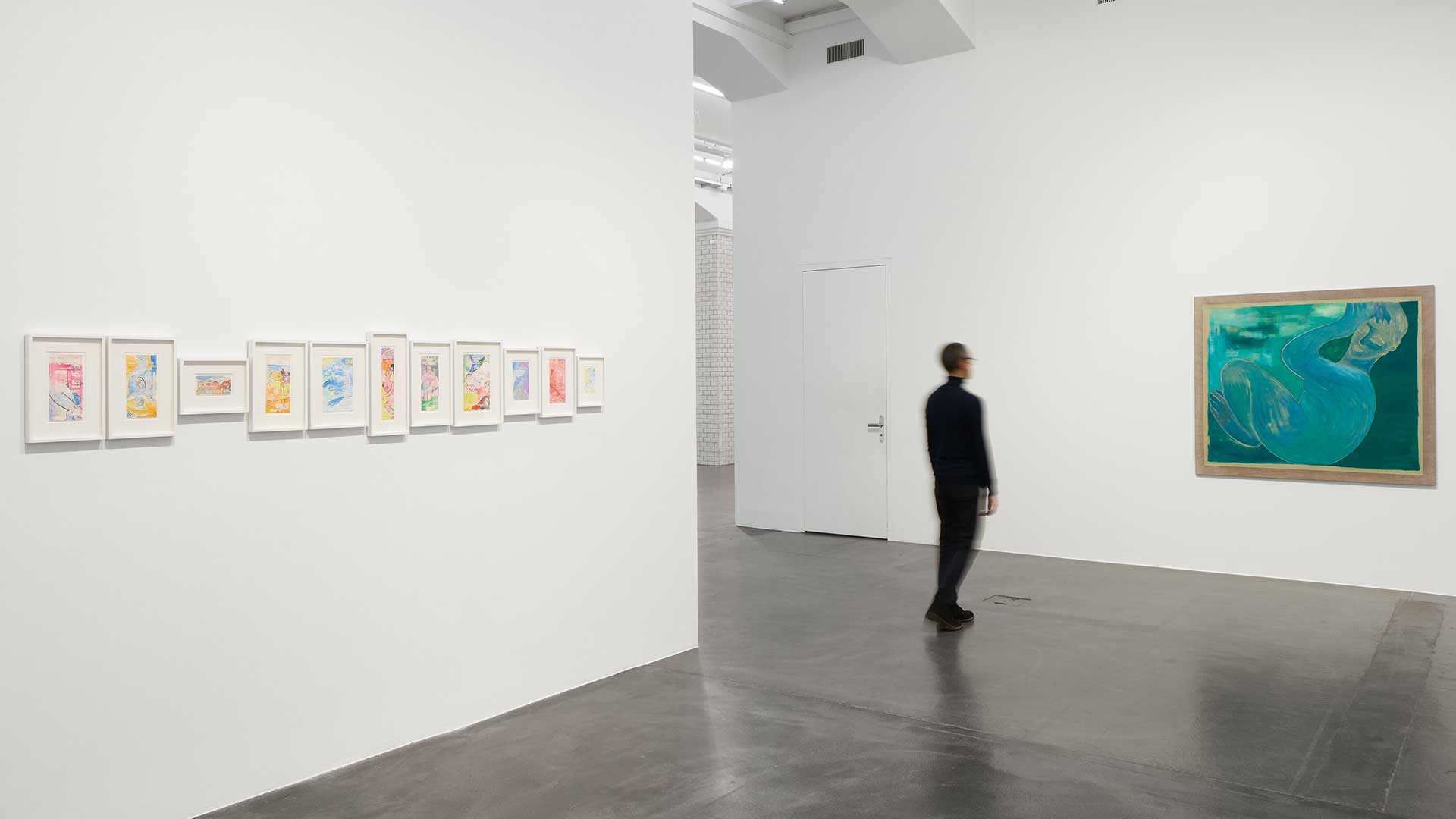
This development is also charted in her series of watercolour paintings on receipts (1988 – 1992) exploring the female nude on a more intimate scale. A travelogue of her trip from Parma to Vienna in the summer of 1988, these works exhibit elements of autobiography. Using watercolour and ink, the contorted limbs and fluid brushstrokes in ‘Le Vieux Bistrot - Paris’ (1991) evoke Josefowitz’s flexible movements in ‘Release,’ whilst the checkered background of ‘Trattoria dall’Amelia – Mestre’ (1992) alludes to her stylised domestic interiors from the 1970s and geometric patterns from the 1990s.
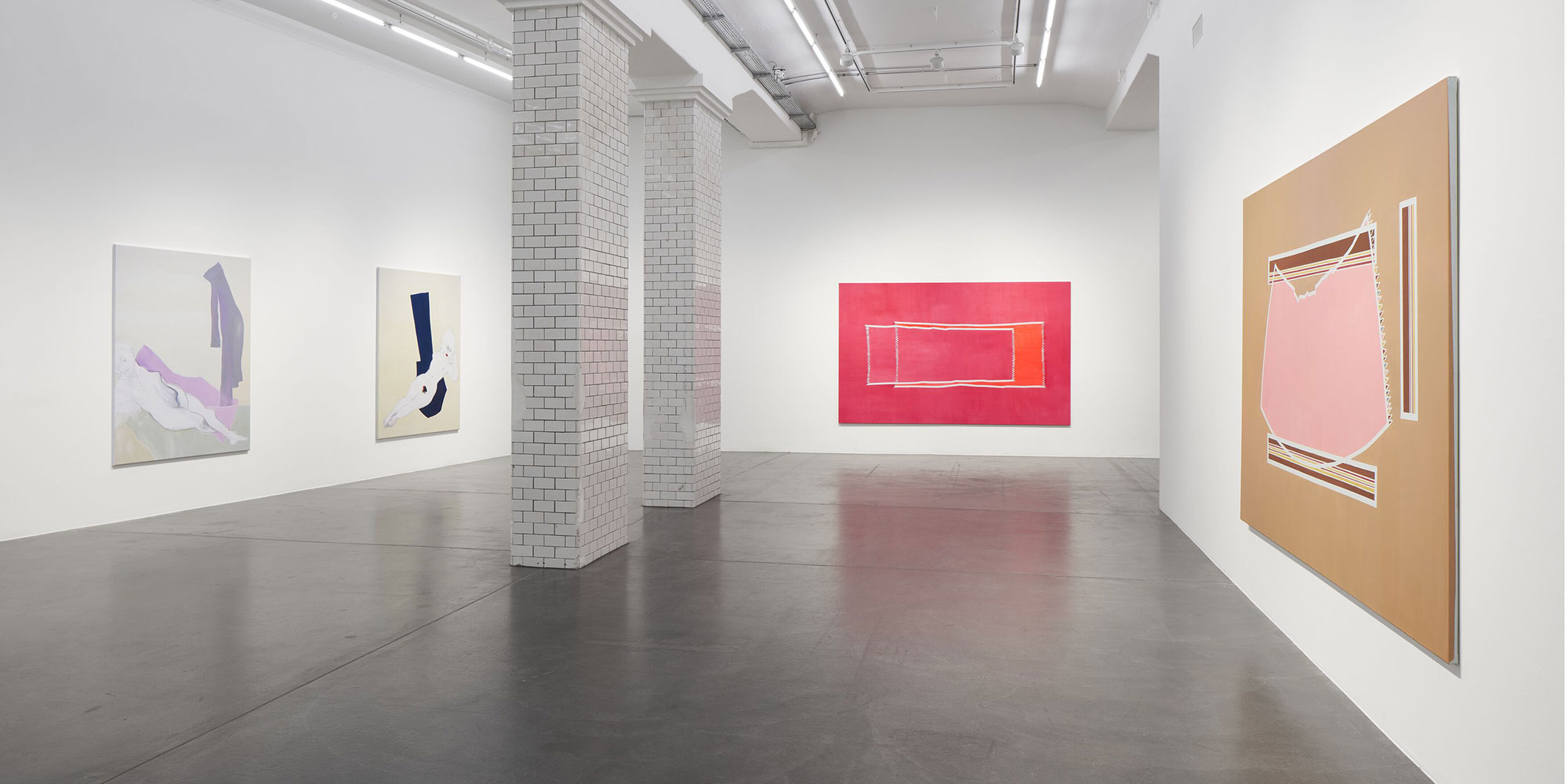
The figurative realm soon gave way to increasing abstraction with Josefowitz’s Prayers series (1998 – 2001). Working on the floor, the series evolved by tracing the outline of a pile of clothes on a canvas, taking particular interest in the shawl. Each canvas started with this new sacred ritual, a kind of dance with the shawl, playing with its shapes on the floor, until she found the composition she liked and traced the outlines. Josefowitz approached color in reference to people and family members, likening the work to portraiture, or in reference to places and landscapes. For example, she made work inspired by Italy and her travels to Egypt, such as ‘Parme’ (c 2001) or ‘Patisserie Égyptienne’ (1999).
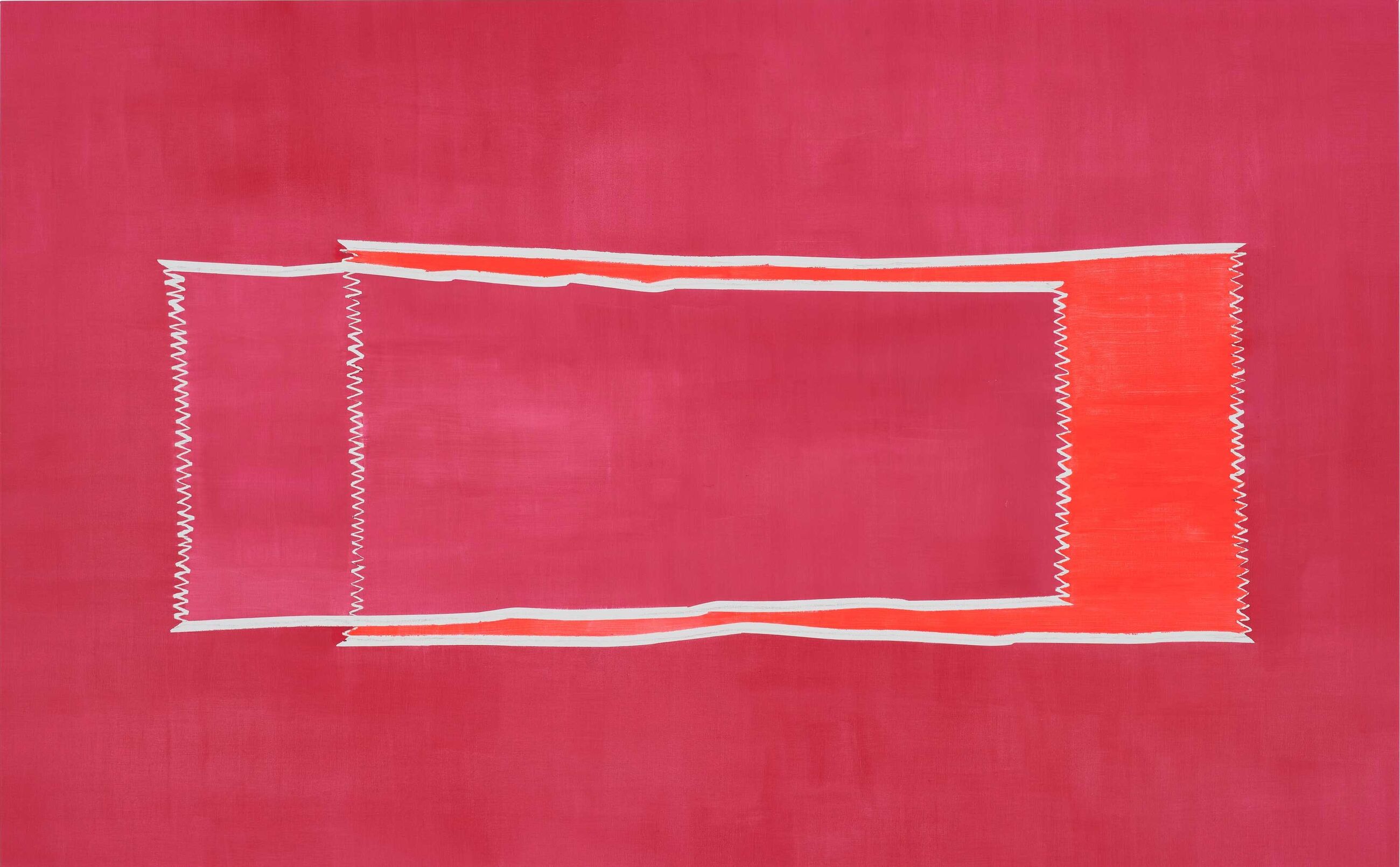
Parme
ca. 2001
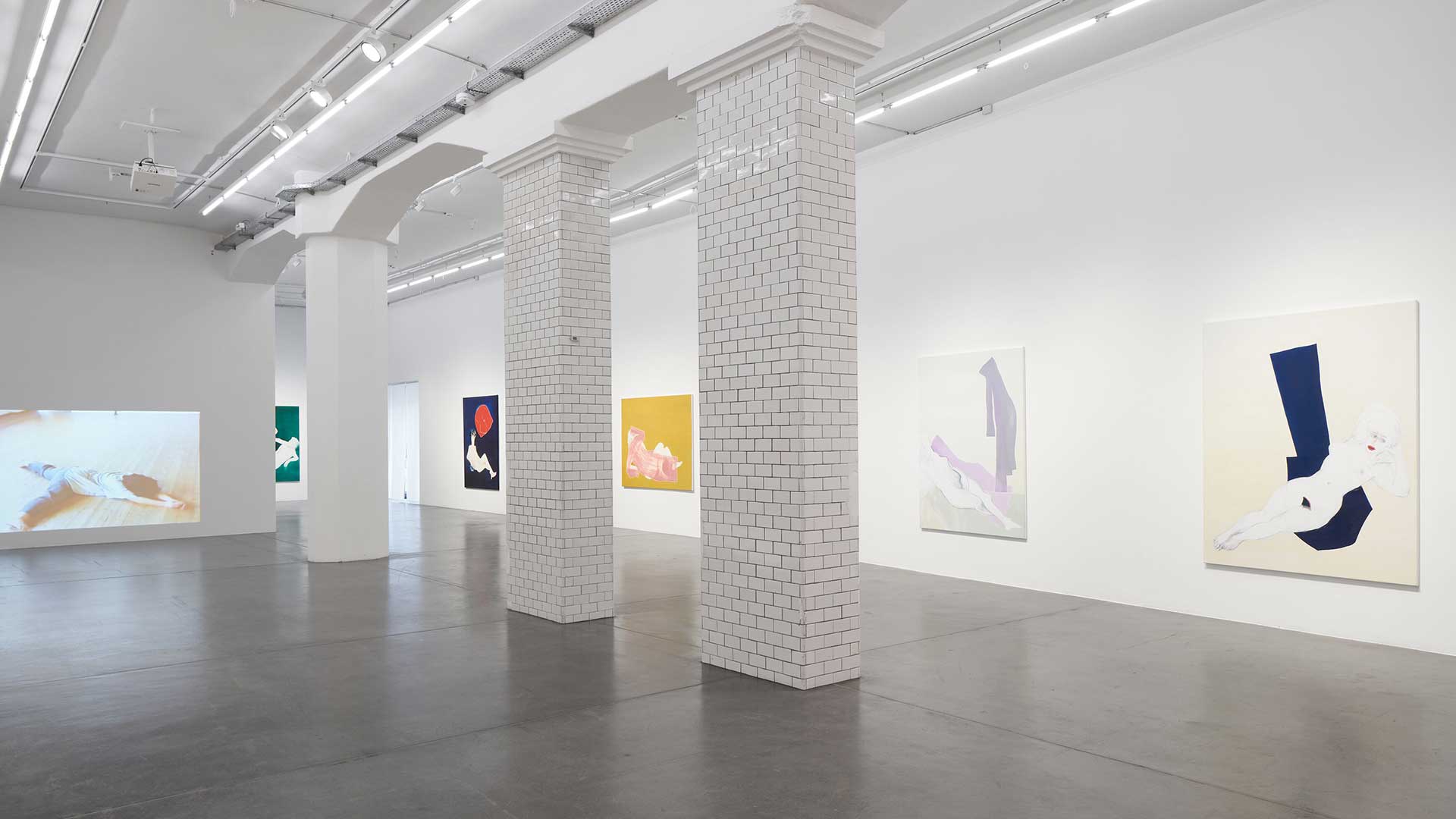
These are placed in tandem with the similarly monumental Venus series (2004 – 2006). Josefowitz became increasingly engaged in the physicality of creation, intersecting her performative and pictorial practices by working on the floor of her studio instead of the wall. For these works, the artist placed her working uniform on the canvas in a dynamic position and traced around it; the resulting abstracted forms, painted in blocks of colour, express the body’s presence and represent self-portraits. The freedom and movement of these forms are juxtaposed with depictions of static reclining nudes that revist tropes of womanhood from classicism, referenced through titles such as ‘D’après I’Olympia de Manet’ (2004 – 2005) and ‘D’Après la Vénus de Titien’ (2004 – 2006).
‘Sometimes an ideal world…’
The remarkable yet little-known work of this multi-talented artist explored the complexities of the self, feminism, spirituality and sexuality for drawing, painting, music theater and dance. Over 40 years of research and creation speaking about her practice Josefowitz said ‘It’s my voice, my breathing, my world. Sometimes an ideal world and sometimes a very harsh world.’
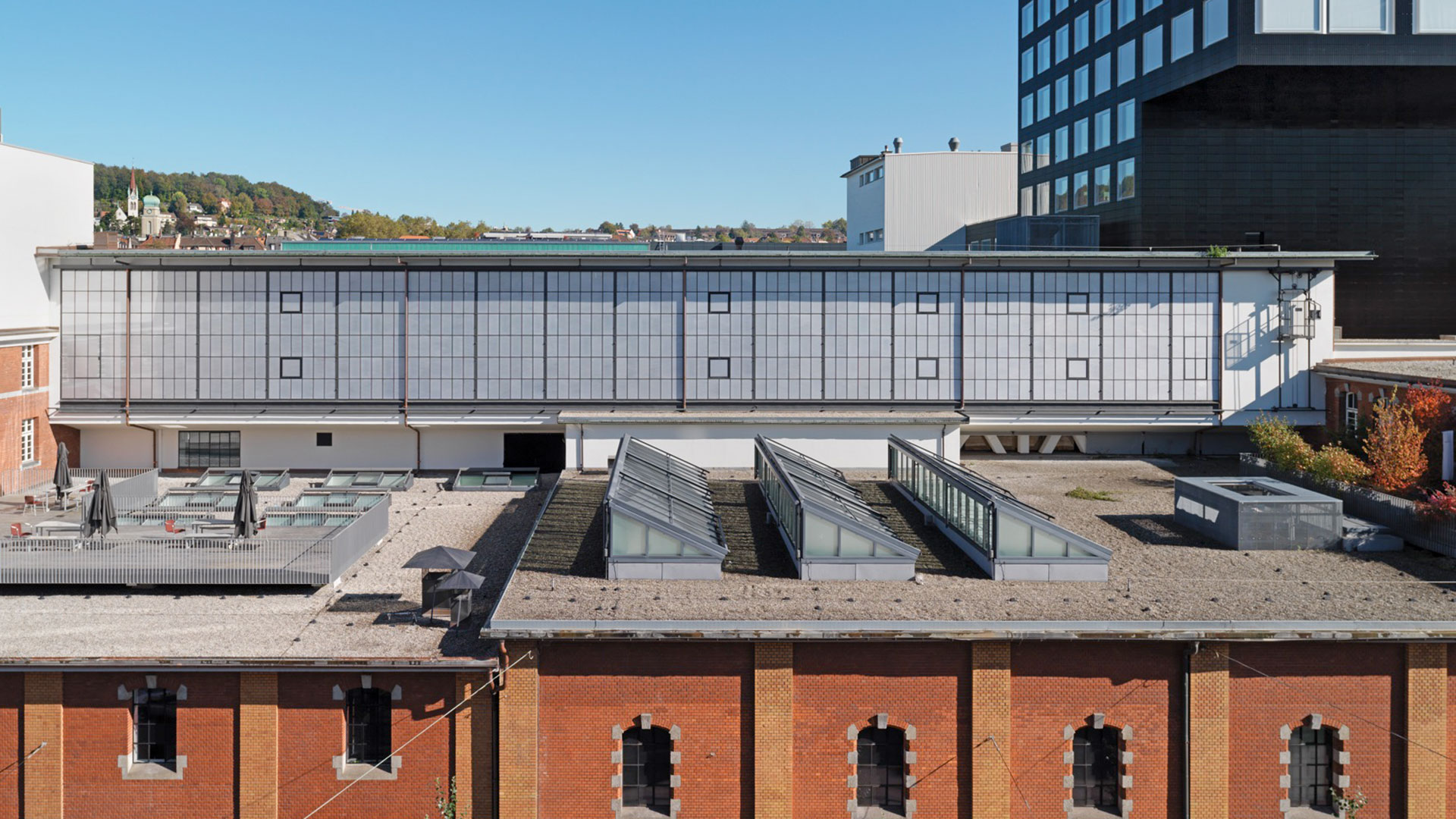
On view at Zurich, Limmatstrasse
‘Cathy Josefowitz. Release’ is on view now through 17 May 2024 at Hauser & Wirth Zurich, Limmatstrasse. Please visit our location page to plan your visit.
Related Content
About the Artist
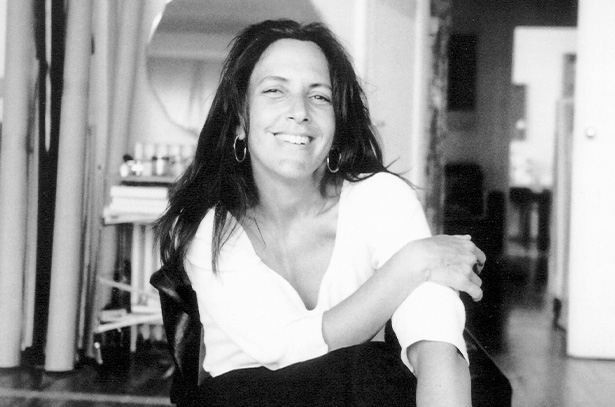
Cathy Josefowitz
Prolific, prescient and powerfully original yet under-recognized in her lifetime, Josefowitz (1956 – 2014) produced a diverse body of work that ingeniously transcends hierarchies of medium and genre. Over the course of four decades, this New York-born, Swiss-raised artist created an oeuvre of remarkable ambition, spanning drawing and painting, theater and dance, as she developed a deeply personal visual syntax in her quest to represent the body as an expressive vehicle of individual experience. Josefowitz’s practice reconciled the visual arts and performance, leaving an exceptional legacy as substantial in scale as it is intimate and potent in its impact.
Born in New York in 1956, Cathy Josefowitz spent her childhood and adolescence in Geneva, Switzerland, from the age of two and a half. Manifesting the inherent gifts of a musical conductor father and artist mother, she taught herself to draw at the age of four in a moment she would later describe as ‘finding her voice.’
Josefowitz’s lifelong fascination with bodily experience was sparked in part by her study of stage design at the Théâtre National de Strasbourg in 1972. Driven by a relentless need for self-expression, she continued her exploration of the corporeal in works on paper that articulated the different configurations a human body can take as a form of both resilience and liberation. She frequently drew in notebooks, depicting her dreams and inner world, while also developing her practice on canvas. Her art quickly revealed a unique awareness of and sensitivity to the physical forms of the self and of those marginalized and made vulnerable by society.
In 1973, while studying at the École Nationale Supérieure des Beaux-Arts in Paris, Josefowitz made large figurative paintings on kraft paper and cardboard that channeled the influence of major artistic movements of the 20th Century, including fauvism, expressionism and Der Blaue Reiter. Likewise influenced by such female artists as Louise Bourgeois, Josefowitz soon came to focus specifically upon women’s bodies, extending this intensive exploration in the late 1970s into her research in Boston into primal theater—an approach based on improvisation and the search for raw, subconscious emotions—as well as a brief period of training as a midwife in New York. In both primal theater and maternity, Josefowitz saw an unidealized primal and primordial reality, and applied her ideas and research to her paintings and burgeoning choreographic practice.
Josefowitz continued to study dance at the renowned Dartington College of Arts in Devon, England from 1979 to 1983, where she met and learned from the masters of contemporary dance, Steve Paxton—co-founder with Trisha Brown of the Judson Dance Theater in New York and the inventor of the contact improvisation dance technique—and Mary Fulkerson, one of the founders of the anatomical release technique. At this time, Josefowitz also became involved in political activism, taking part in a number of demonstrations, marches and conferences supporting both the feminist movement and the gay and lesbian liberation movement, often creating posters to promote these events. She was notably part of the Greenham Common Women’s Peace Camps, protesting the local storage of cruise missiles in Berkshire, England, and co-founded with Mara de Wit a women-only post-punk band called Lining Time, which became well-known among the activist circuits in South West England. Mirroring the increase in her engagement in political activism and feminism, Josefowitz’s art intensified its representation of female sensation and feeling.
While at Dartington, and during the years after she graduated, Josefowitz began more intensively seeking ways to dismantle the conventional hierarchy that separated performance and painting, and to reconcile these two mediums in a unified practice. This effort is typified by one of her first choreographic pieces, ‘Woodstock’ (1983), in which she playfully used dance and movement to animate her childhood memories of her grandparents’ house—and the accepting and loving community she encountered there—in Upstate New York.
Captivated by the immediacy of performance, Josefowitz extended this organic exploration of the human form into her drawings and paintings as well; she regularly sketched on tablecloths, napkins, receipts, invoices and postcards, while continuing to work in her notebooks, amassing a travelogue of the cities she visited. During this period in the late 1980s, she painted on kraft paper that she rolled onto the wall of her studio, which allowed her to modify the size of her paintings as she worked.
As the 1990s arrived, the intersection of Josefowitz’s performative and pictorial practices was achieving its greatest definition, while the figurative realm she had spent her career portraying in two dimensions gave way to increasing abstraction. A series of paintings based on her 1989 choreographic work ‘For Ever Young’ marked the beginning of a gradual disappearance of the body from Josefowitz’s oeuvre. This series, made in tribute following the tragic death of a friend and colleague, prominently features an empty chair, emblematic of the way in which the artist’s imagery would become more abstract, geometric and monochromatic in the ensuing decades.
As Josefowitz became increasingly engaged in the physicality of creation, pursuing her mission to collapse boundaries between performance and visual mark-making, she also began her painting sessions with a dance. Large-scale paintings from this period were no longer created on the wall of the artist’s studio, but on her floor, where Josefowitz moved, reached and swayed over the surface of her canvas in a highly calculated attempt to capture in oil paint the ephemeral action.
Following a diagnosis of breast cancer in 2007, Josefowitz’s work acquired an intensifying air of spirituality. She initiated a series of abstract kamasutra paintings in 2010, depicting couples set against airy and limitless monochrome backgrounds, which was followed by a series of musings and meditations on existence in the form of large-format paintings inspired by skies and landscapes, as well as her own emotional states, that she pursued until the day she died on 28 June 2014, in Geneva.
Image: Cathy Josefowitz, Untitled, 1974 c., Oil on cardboard, 97.7 x 68 cm / 38 1/2 x 26 3/4 in © Estate of Cathy Josefowitz
Current Exhibitions
1 / 11

